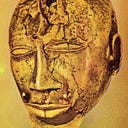The Changing Faces of the Romans
I recently finished Mike Duncan’s History of Rome podcast. A thing that struck me, given my interest in states and nations, was the demographic make up of those who called themselves “Romans” from the birth of the city state to the fall of Constantinople.
First things first: as I’ve stated that this is a not-so-serious blog, I am not going to provide an extensive list of sources to back each claim I make. This is armchair history-lite, private commentary on stuff I find interesting made public, but I will recommend parsing through lists of Roman rulers and maybe checking out select episodes from the History of Rome podcast to see where I’m coming from.
A Run Through History I: The Halcyon Days
A quick overview of the demographics of Rome and of its consequences, ignoring most historical nuance to drive home the larger point might look something like this: a small city state in Latium is founded by Latins. That city, Rome, goes on to dominate their other Latin neighbours to establish itself as the pre-eminent Latin city.
At this time, Romans are Latins. The city begins to look beyond its ethnic countryside and vies for dominance with other Italic tribe — famously the Etruscans of today’s Tuscany — and it succeeds at this.
Now, Romans are still Latins, but the fledgling empire somewhat incorporates its newly dominated peoples into some kind of imperial system, localised to the peninsula. As Rome begins to take over what we now call Italy, it begins to contest most seriously with non Italic peoples; Greeks, Carthaginians, Gauls and other Celtic peoples, the whole Mediterranean lot.
After besting Carthage (shortly after their own scrape with extinction at the hands of Hannibal), the Romans (the Latins) faced a reckoning when their fellow Italics rebelled because of the very real grievances they had against pro-Latin discrimination and citizenship privileges.
It is called the “Social War” (ie. the War of the Socii), but I like to think of it as the War for Citizenship. In spite of the eventual Latin victory, concessions were made and more non-Latins became Roman.
The internal conflicts between conservative and liberal parties within Rome (Sulla-Marius, Caesar-Pompey) represent the eternal attempt of incumbents to guard their privileges versus a kind of pragmatic expansionism that finds profit in being the head of a catholic regime.
Caesar had his way even (rather, especially) after his death when Octavian won supremacy over the now large and ethnically diverse empire. It’s worthwhile to note that up to this time, in spite of the gradual expansion of the make up of those who could call themselves Romans, the aristocracy — the representatives of the cream of societal privilege — was still primarily Italian. The legal status and the underlying reality of what “Roman” means will change rapidly when the stable, locked-in republican system is replaced by the rule of one man and one family.
Theory
I say “locked-in”, because the senatorial class was just that: a class. Classes tend to have resilience when they achieve some optimum population. An aristocracy that is too large is just a middle class. Too small, and it risks extinction — preserving a bloodline is really difficult —, or annihilation — killing off a few people isn’t that hard.
The senatorial rank was powerful enough to maintain a monopoly on who gets in, and populated enough to ensure that, whoever eventually led Rome was one of the few that belonged to the specific demography that made up their ruling class. That resilience breaks down under monarchical rule, because the membership of the ruling class is determined at the whim of the monarch, and the preservation of that line mostly falls on the chance that one family survives long enough.
At this point I will note what is, perhaps, the main point of this post: the things humans create often die when they’re neglected. Survival is (not entirely, but mostly) predicated on attention, concern and action in accord with the intended outcome. If people cared enough about a thing, they will work to preserve it. If they don’t, it will most certainly decline.
The continued existence of a ruling class in Rome that actively cared about the continued existence of their city and empire played a very significant role in why the city maintained its relevance and pre-eminence for so long, and to a lesser but not insignificant extent, why it dominated as much as it did. The resilience of the senatorial class (as against the monarchs after Augustus) was important in keeping the idea of Rome alive. The rigidity of the same class could have spelled doom for the republic’s dominance and expansion much earlier on, but that is a slightly different topic.
We begin to see a lack of attention given to the city once “caring about Rome” becomes the responsibility of one individual and their next in line. Following Tiberius’ removal of himself from the city, a pattern begins that will see its bloom in much later emperors. The idea is established that the emperor of Rome does not need to reside in the city.
The volatility of monarchical rule and the specific precedents of legitimacy (martial strength) set by Augustus and co almost guaranteed that, unless the army was gate-kept, at some point in time non-Italians will rule over the Romans in their own empire.
A Run Through History II: The Consequences
Life (and history) is nuanced, so this sort of change doesn’t always happen cleanly, but milestones in the make up of Rome’s leadership are important to look at since the underlying theme of demographic destiny can be read into such transitions.
From Strabo’s consulship to Trajan’s reign, we see non-Latins and Spaniards break into the pinnacle of Roman political society. With the latter’s rise came the pre-eminence of the latter’s concerns, and I would argue that for the Spanish provincial, the Empire was more than that famous Italian city.
This consequence of the monarch’s perspective, no doubt shaped by their place of birth and ethnicity and other life experiences, becomes more pronounced as their non-Italian-ness becomes less of an anomaly.
Rome was still by far the most important city during most of the life of the empire, and it seems obvious that most of these men would have pragmatic and emotional reasons for attaching themselves to their mother city. The latter drive to maintain a presence in Rome itself became less of a thing following the underlying realities of Roman politics. With power essentially vested in an individual rather than institutions, the centre of power no longer resided in fixed buildings where people and their traditions were domiciled. Power rested wherever the monarch was, and for pragmatic reasons (for those not emotionally vested in the city of Rome), wherever the monarch was, was increasingly somewhere other than Rome.
So we see Diocletian move his capital to Nicomedia, Constantine I from York to modern-day Istanbul, Valentinian I to Milan and then, at the end of its history, Ravenna became the preferred nest for imperial families. Keep in mind that many of these emperors were Illyrian, and we can begin to ask ourselves just how “Roman” this empire actually was.
One hilarious moment in Mike Duncan’s History of Rome podcast highlights just how demographically different the empire had become at one point: during one battle in a late-empire civil war, both armies were German. If you ignored the generals asking the men to fight for them, it could have passed as a random internal German conflict. There was also the remarkable moment when a Thracian general was elected to the purple by his peers, a thing that would have tickled uppity Spartacus.
Conclusion
In the final episode of The History of Rome, Mike speculates on what could have been had the Romans not kept the Germans out of power as much as they did in the latter years of the empire. Mike wondered if we would have had “the German emperors” just has we had the Spanish and the Illyrians at one time in its history.
This comment is the reason I’m writing this. The Spanish and Illyrian emperors rose to the occasion when the Italians had abdicated their own responsibilities. These men took up the mantle and injected new life into an empire they (or their ancestors) had been brought into by way of conquest and assimilation.
They were not Latin, and not Italian, and as I’ve noted, their concerns would have been less parochial than those of the peninsula natives. Perhaps this illustrates the fact that though assimilated, they hadn’t been brought so deep into the fold that they would consider themselves Italian even by proxy. But at least they knew and loved and cared for the empire, and worked to preserve is as best as they could. Even if it meant stepping on the mother city’s toes.
Had the Germans been so integrated, perhaps we could have had an emperor Stilicho of the West along with a line of Germanic emperors and usurpers, and a dynasty that may have drawn strength from Northern Europe, even if it meant relinquishing some of its hold on the Mediterranean coast.
Rome would probably have fallen further behind into obscurity, and the common Latins would have felt that their empire was no longer theirs. But they had long ago abdicated responsibility for it, and what would matter to the new ruling class is that it was still there, and in their hands.
History, however, was unkind to the idea of Rome. When Odoacer deposed Romulus Augustulus, he did not care so much about being co-emperor with whoever held Constantinople, otherwise he would have contested it. The Eastern emperor’s acquiescing to Odoacer’s proclamation as rex and dux of Italy becomes the point at which we can say that not even the aristocracy of the city of Rome cared about the existence of their empire.
In a very real way, that was the end.

